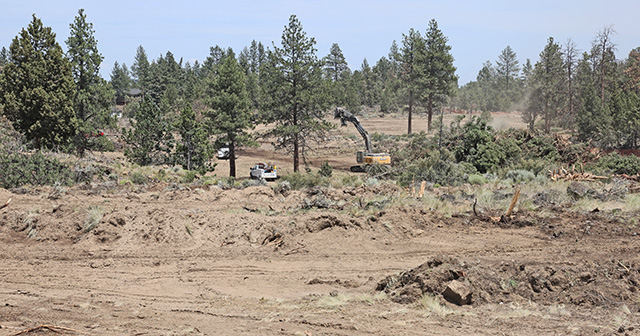Editorial: Planet hunters near Bend need your help keeping skies dark
Published 5:00 am Wednesday, March 27, 2024

- Measuring the depth of the dip in brightness when a planet passes in front of a star and knowing the size of the star, scientists can determine the size or radius of planet.
They are exoplanet hunters at Pine Mountain Observatory near Bend, seeking planets around other stars.
University of Oregon students are using the telescopes to observe the planets for a NASA mission called TESS, Transiting Exoplanet Survey Satellite.
There are more than 5,500 known exoplanets and about double that are to be confirmed. Most are tethered to another star. When a possible planet is discovered, some are assigned to ground-based telescopes for follow up.
The orbits of some exoplanets put the planet between their sun and Earth. When they transit across, they block some of the starlight. Measuring the depth and shape of the dip in starlight can tell scientists things such as the size of the planet, its orbital speed and how far away it is from the star. From there, you can make a very good guess about its mass and with that you can estimate the density and then whether it is a rocky planet like Earth or a gassy planet like Jupiter.
Once a week the observatory gets an email of the list of targets that NASA would like the students working Pine Mountain to take a look at. Since the exoplanet hunt began at the observatory last summer, it has detected 11 transits. The data from Pine Mountain is turned into a report sent off for further research.
The observatory is 34 miles southeast of Bend, up at 6,300 feet. It has a budget of some $200,000 a year, about half of which comes from the university. It’s work is also supported by the Roundhouse Foundation in Sisters and the Heising-Simons Foundation of California.
It’s not unusual for a college campus to have a telescope in some building. It’s rare for a university to operate one that can make a significant scientific contribution.
“It’s not a toy,” said Scott Fisher, the director of Pine Mountain Observatory. “We can do things with this observatory.”
“We are kind of the first step in a chain that can get things escalated up,” he said. And it’s students doing the work, learning and getting hands-on experience. “It gets them stoked as you might imagine.”
We reached out to Fisher because we wondered if astronomers were nervous about the potential for the new Deschutes County landfill going in near the observatory, at one of the possible locations called Roth East.
Light and dust are enemies of astronomy. Light can contaminate the sky, sabotaging the ability of a telescope to detect faint objects. The location at Pine Mountain has proven to be a good one. Yes there is light contamination from Bend, Prineville and Redmond. Much of the light from Bend is blocked by a ridge. The northern horizon of the sky for the observatory is fairly contaminated, but the sky at Pine Mountain still has the darkest astronomical classification.
If you need to have outdoor lighting at night at your home —or at say a county landfill, shield the light and ensure it is pointed down. The observatory needs a dark future. It might help a student just outside of Bend see a distant world.
You can find more about the observatory and how to visit here: pmo.uoregon.edu







